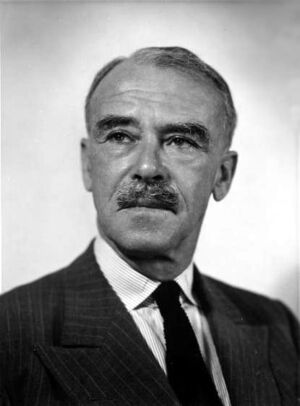Richard Casey
(deep politician, spook) | |||||||||||||||||||||||||||||||||||||||||||||||||||||||||||||||
|---|---|---|---|---|---|---|---|---|---|---|---|---|---|---|---|---|---|---|---|---|---|---|---|---|---|---|---|---|---|---|---|---|---|---|---|---|---|---|---|---|---|---|---|---|---|---|---|---|---|---|---|---|---|---|---|---|---|---|---|---|---|---|---|
 | |||||||||||||||||||||||||||||||||||||||||||||||||||||||||||||||
| Born | 29 August 1890 Brisbane, Queensland | ||||||||||||||||||||||||||||||||||||||||||||||||||||||||||||||
| Died | 17 June 1976 (Age 85) Melbourne, Victoria | ||||||||||||||||||||||||||||||||||||||||||||||||||||||||||||||
| Nationality | Australian | ||||||||||||||||||||||||||||||||||||||||||||||||||||||||||||||
| Alma mater | Melbourne Grammar School, University of Melbourne, Trinity College (Cambridge) | ||||||||||||||||||||||||||||||||||||||||||||||||||||||||||||||
| Founder of | Australian Secret Intelligence Service | ||||||||||||||||||||||||||||||||||||||||||||||||||||||||||||||
| Member of | Melbourne Club | ||||||||||||||||||||||||||||||||||||||||||||||||||||||||||||||
| Interests | Moral Rearmament | ||||||||||||||||||||||||||||||||||||||||||||||||||||||||||||||
| Party | United Australia Party, Liberal Party of Australia | ||||||||||||||||||||||||||||||||||||||||||||||||||||||||||||||
| |||||||||||||||||||||||||||||||||||||||||||||||||||||||||||||||
Richard Gavin Gardiner Casey, Baron Casey was an Australian statesman who served as the Governor-General of Australia, in office from 1965 to 1969. He was also a distinguished army officer, long-serving cabinet minister, Ambassador to the United States, member of Winston Churchill's War Cabinet, and Governor of Bengal. Casey was closely connected to leading members of both the British and US intelligence agencies, including two Dulles brothers, CIA Director Allan and Secretary of State John Foster Dulles.[1]
Early Life
Casey was born in Brisbane, but moved to Melbourne when he was young. He entered residence at Trinity College, Melbourne in 1909 while studying engineering at the University of Melbourne before continuing his studies at Trinity College, Cambridge.
Early career
In 1914, Casey enlisted as a lieutenant in the Australian Imperial Force. He saw service in the Gallipoli Campaign and on the Western Front, reaching the rank of major, before becoming a Chief Intelligence Officer in 1920. Casey joined the Australian public service in 1924 to work at Whitehall as a liaison intelligence officer with the British administration. He reported directly to the prime minister, Stanley Bruce, with whom he developed a close relationship.
1931-45
In 1931, Casey was elected to federal parliament for the United Australia Party. He was Treasurer from 1935 to 1939 (under Joseph Lyons and Earle Page), and then as Minister for Supply and Development from 1939 to 1940 (under Robert Menzies). During World War II, Casey was Ambassador to the United States from 1940 to 1942, and then joined Winston Churchill's War Cabinet as its representative in the Middle East. In 1944, Churchill appointed him Governor of Bengal, where he handled the recovery from the 1943 famine and civil unrest in the lead-up to independence.
Casey returned to Australia in 1946. He was federal president of the fledgling Liberal Party from 1947 to 1950, and re-entered parliament at the 1949 election. Casey was reappointed to cabinet shortly after, again serving under Robert Menzies.
Foreign Minister
He held various national development portfolios from 1949 to 1951, and then served as Minister for External Affairs until his retirement from politics in 1960.
In May 1952, Casey made an announcement in Parliament that ‘there was a nest of traitors in our midst’[2]. This ‘nest’ was identified as having been in the Department of External Affairs and it had flourished when H.V.Evatt was Minister.
Casey established a spying agency to collect information about the Chinese communists, the communists in French Indochina and the Malayan Communist Party. In May 1952 he obtained the Prime Minister’s authority to establish the Australian Secret Intelligence Service (‘ASIS’) which, like the CIA, would have an operations wing and officers trained in the use of guns and explosives[3]. Casey arranged for the ASIS agents to be trained by the MI6, after which they were posted to serve undercover in Australian embassies.[1]
Governor-general
In 1965, Menzies named Casey to replace Lord De L'Isle as governor-general. He served for just under four years; the only major constitutional issue during his tenure was the disappearance of Harold Holt in 1967.
References
- ↑ a b http://classic.austlii.edu.au/au/journals/UNSWLawJl/2004/23.html
- ↑ Commonwealth, Parliamentary Debates, House of Representatives, 27 May 1952, 808 (Richard Casey, Minister for External Affairs).
- ↑ Charter of the Australian Secret Service, signed Robert Menzies, 15 May 1952.
Wikipedia is not affiliated with Wikispooks. Original page source here